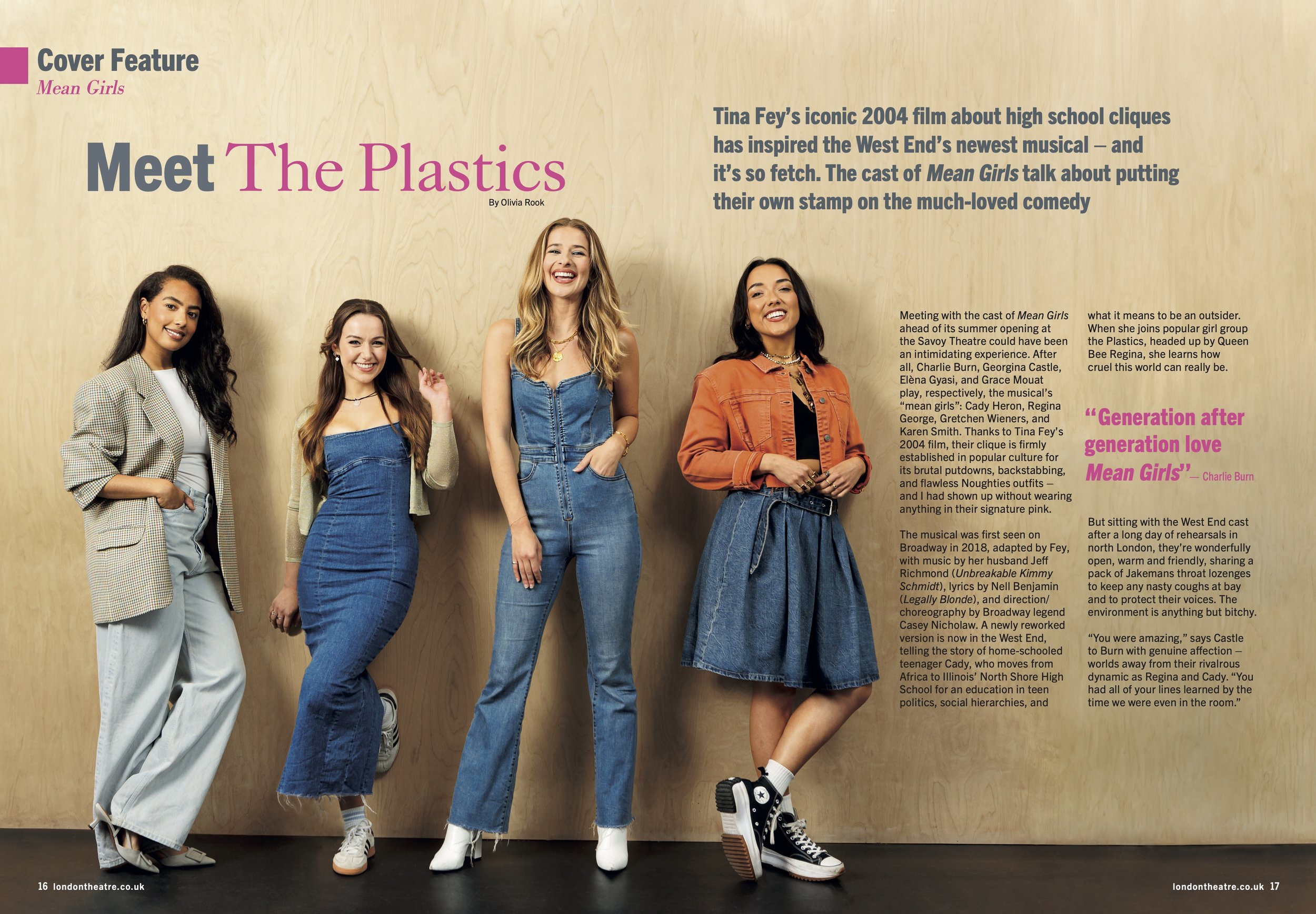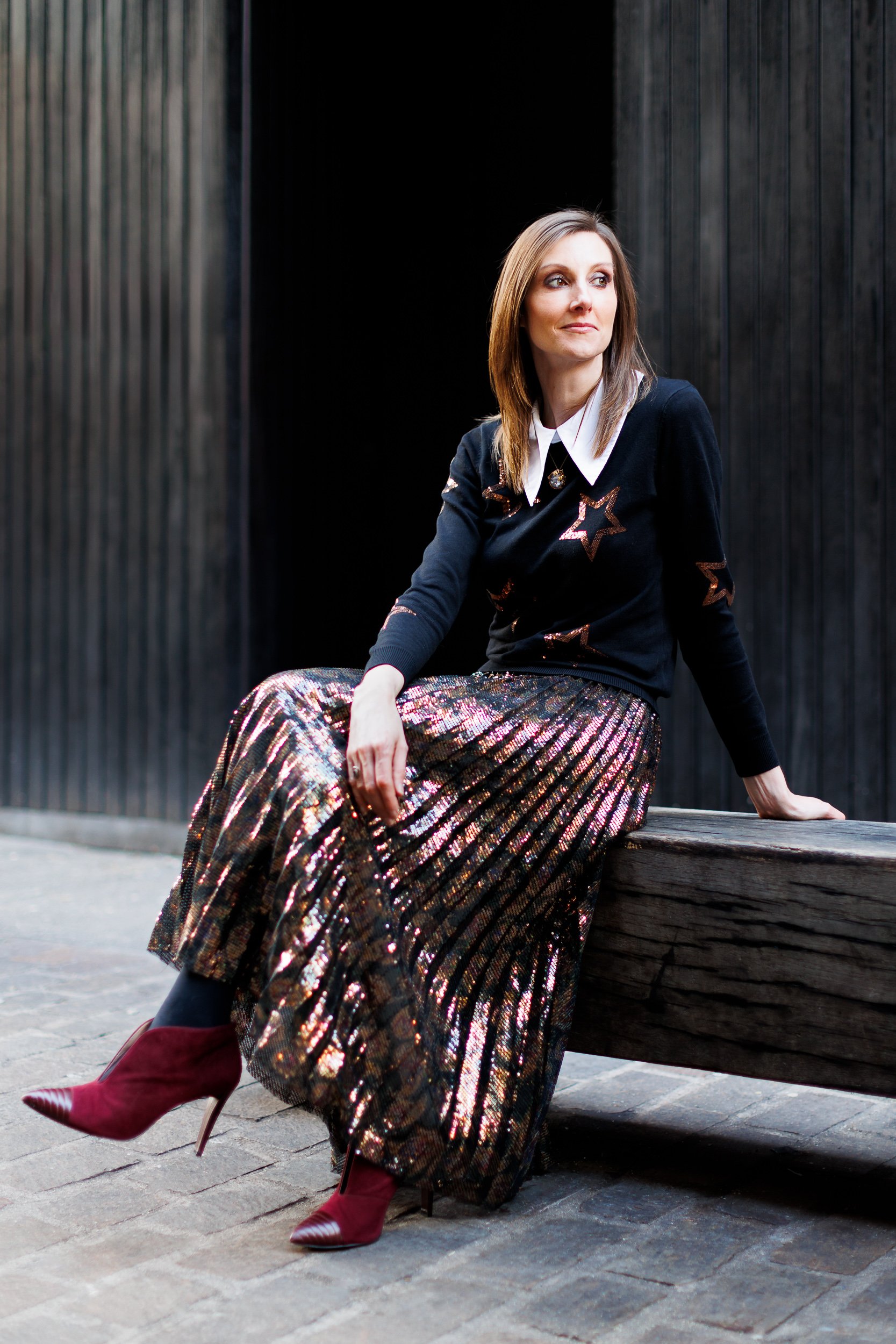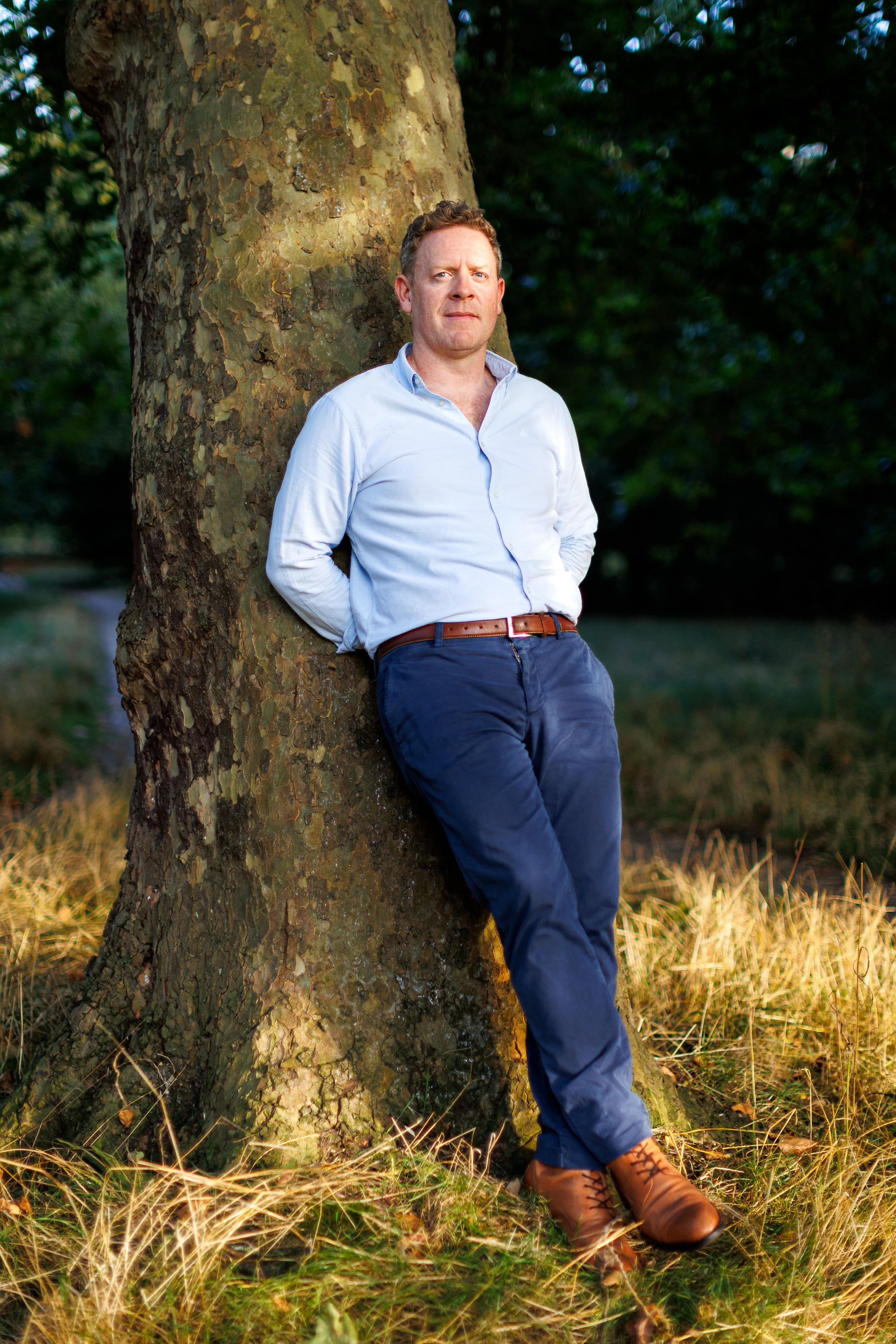Mean Girls
Really fun commission for London Theatre Magazine, featuring the cast of Mean Girls, now showing at the Savoy Theatre:
Graduation
I was commissioned to shoot University of London graduation images - event coverage and portraits at the Barbican:
Recent work - January 2024
Recent portrait commissions including work for AB magazine, iCrossing, Singapore Airlines and Innovate Communications.
Long live the local
The British Beer and Pub Association supports pubs and breweries across the UK. I was commissioned by 89up to photograph the draymen, landladies, bartenders and farmers who make up the industry - the people behind the pint - to support the Christmas “Long Live the Local” campaign.
Recent work - October 2023
Adam Habib, Director of the School of Oriental and African Studies, University of London
AmEx Leadership Academy attendee at the US Ambassador's Residence, Winfield House, Regent’s Park.
Nick McClelland of Champion Health, shot for Corporate Adviser magazine.
Emma-Jayne Hamilton, Ebay’s head of luxury handbags
Community centre refurb by IKEA
Seeing past the subject (2)
I wrote an article some time ago on the value of using famous faces in your portfolio.
tl;dr: celebrity shoots are shorthand for access, big campaigns or notable clients. In other words, a middling photo of an A-lister may have more impact than a good photo of an unknown person.
I wanted to follow up with some comments and rules on this perilous practice, because it is a recipe with a strict “use by” date. Celebrity photos age quickly. And badly. You need regular and fresh produce, and more so in the age of Instagram. Because - regardless of whether the person stays famous or fades into obscurity - without new material to update and replace one’s portfolio, the march of time leads to the same interpretation: your most up to date celebrity shoot was too long ago. I’m assured by colleagues that in all other respects one’s portfolio need not change, and keeping old photos is fine: this consideration only applies to photographers cashing in by using famous faces on their websites. You’re tied into a constant game of catch-up, but that's the price you pay for trading in the currency of currency.
Here are the rules:
A-Listers: You can keep them for around a decade in your portfolio. Just make sure they're still recognisable.
B-Listers: Remove/update after 5-7 years.
Reality TV stars: Remove after 3-5 years.
Influencers: Check if they’re still famous every 1-2 years.
People who appear on Christmas pantomime posters at train stations, if they have an accompanying line reminding you where you’ve seen them before e.g. “… from The Bill”: No.
Niche favourites: These are podcasters, TikTok stars etc. who have the envious position of being A-listers to those who know them, but otherwise aren’t widely recognised in public - so don’t count as celebrity, and therefore can be used indefinitely.
Political and Historical Figures: These shots are like vintage wine and can remain in your portfolio indefinitely, as long as you have a collection of similar images. One photo of Nelson Mandela won’t work - it’s just a lucky commission. You need Margaret Thatcher, Bob Geldof and Freddie Mercury to complete the set, and so establish yourself as someone who’s really been around.
Living legends: There are only a few of these but you can trade on them on your website forever. Ideally, place them on your homepage and bring them up in conversation regularly. They include people like David Attenborough, Helen Mirren, Christopher Walken and Stephen Fry.
The exception to the rule is if you have more than twelve famous faces, in which case you’re a regular at this - perhaps even a celeb photographer - and don’t need to remove any old photos ever, on the condition that you must keep adding.
Next time I’ll talk about why portfolios containing two pictures from the same shoot should result in a prison sentence.
Tinder
I was commissioned by Weber Shandwick for a Tinder campaign to help deaf people find love. We photographed twins Hermon and Heroda (Being_Her) teaching some British Sign Language (BSL) for Deaf Awareness Week (featured here in Cosmopolitan):
BSL is the fourth most-used language in the UK. It’s not only hand movements, but facial expressions and use of the body, too. It has its own grammar and sentence structure, and there are regional dialects.
There are 126 different versions around the world. Interestingly, the British and American versions are largely mutually unintelligible.
Decisions on nuance, emphasis and accuracy came up even for these simple phrases on the day. For each set the best version was argued for, and we had to reshoot a few sequences to get a version that everyone could agree on.
And more than this, as language is communicated as a flow in real time, we had to stop and choose the most salient part(s) of many of the gestures - often their start or end point, or both. This may sounds obvious, but when capturing movement - from a speaker at a conference to a sport action shot - photographers need to know and anticipate what to look for, and it’s central to telling the story. Not knowing BSL, however, I couldn’t guess what the right moments would be to photograph.
And, sure enough, I had creeping doubts later that the sequences were in the correct order..! It was a fun, unusual shoot which the twins made easy.
-
June 2025
- Jun 19, 2025 The forever purge
- Jun 19, 2025 University prospectus
- Jun 11, 2025 Recent work - June 2025
- Jun 6, 2025 On Looking
-
January 2025
- Jan 21, 2025 The photographer's dictionary
-
November 2024
- Nov 19, 2024 Recent work - November 2024
-
September 2024
- Sep 17, 2024 Recent work - September 2024
-
July 2024
- Jul 4, 2024 Mean Girls
-
May 2024
- May 28, 2024 Wakehurst
- May 20, 2024 Graduation
-
April 2024
- Apr 16, 2024 Recent work - April 2024
-
January 2024
- Jan 22, 2024 Recent work - January 2024
- Jan 9, 2024 Long live the local
-
October 2023
- Oct 13, 2023 CBRE
- Oct 4, 2023 Recent work - October 2023
-
September 2023
- Sep 22, 2023 Seeing past the subject (2)
-
April 2023
- Apr 17, 2023 Tinder
- Apr 12, 2023 Recent work - April 2023
-
February 2023
- Feb 7, 2023 Will AI do me out of a job?
-
December 2022
- Dec 12, 2022 Freelance life and other animals
-
November 2022
- Nov 4, 2022 Recent work - November 2022
-
July 2022
- Jul 26, 2022 Recent work - July 2022
- Jul 25, 2022 SOAS
-
May 2022
- May 30, 2022 Ebay
- May 18, 2022 Physiotherapy
- May 4, 2022 Vertex
- May 4, 2022 Roche
-
January 2022
- Jan 6, 2022 Recent work - December 2021
- Jan 5, 2022 Prevayl
-
December 2021
- Dec 17, 2021 The day the hairdressers opened
-
December 2020
- Dec 15, 2020 SOAS - postgraduate prospectus
- Dec 7, 2020 Online teaching
-
October 2020
- Oct 11, 2020 Gratitudes
- Oct 5, 2020 GoFundMe Heroes
-
September 2020
- Sep 24, 2020 Headshots: why we need them, and why we don't like them
- Sep 15, 2020 From the archives - seven
- Sep 10, 2020 Recent work - September 2020
-
February 2020
- Feb 13, 2020 Mootral
-
November 2019
- Nov 7, 2019 Biteback 2030
-
October 2019
- Oct 2, 2019 Guinness World Records
-
September 2019
- Sep 16, 2019 B3 Living
-
July 2019
- Jul 22, 2019 Recent work - July 2019
- Jul 19, 2019 From the archives - six
-
April 2019
- Apr 15, 2019 Recent work - April 2019
-
March 2019
- Mar 12, 2019 International Women's Day
-
February 2019
- Feb 4, 2019 Recent work - February 2019
-
January 2019
- Jan 17, 2019 Four photographs
-
December 2018
- Dec 19, 2018 Handy gadgets and where to find them
- Dec 10, 2018 From the archives - five
-
November 2018
- Nov 26, 2018 How to compose photographs
- Nov 5, 2018 Recent work - November 2018
-
October 2018
- Oct 17, 2018 How to edit photographs in Instagram
- Oct 8, 2018 Out with the old
- Oct 4, 2018 Recent work - October 2018
- Oct 1, 2018 A little learning is a dangerous thing
-
September 2018
- Sep 12, 2018 From the archives - four
-
August 2018
- Aug 16, 2018 Recent work - August 2018
- Aug 15, 2018 I don't follow you
- Aug 6, 2018 Cookpad
-
June 2018
- Jun 7, 2018 Monks & Marbles
-
May 2018
- May 23, 2018 Netflix & Woof
- May 21, 2018 Best of Instagram
-
April 2018
- Apr 24, 2018 Standard Chartered Bank
-
March 2018
- Mar 16, 2018 Corporate self-portraiture (two)
- Mar 8, 2018 International Women's Day
-
February 2018
- Feb 9, 2018 Winter swimming
-
January 2018
- Jan 23, 2018 From the archives - three
- Jan 16, 2018 2017 in pictures
-
December 2017
- Dec 6, 2017 Toyota Mobility Foundation
-
November 2017
- Nov 24, 2017 Corporate work
-
October 2017
- Oct 31, 2017 Recent work - October 2017
- Oct 13, 2017 Pfizer - Protecting our Heroes
-
September 2017
- Sep 21, 2017 Campaign portraits
-
August 2017
- Aug 22, 2017 Wyborowa vodka
- Aug 1, 2017 Vauxhall animation
-
July 2017
- Jul 31, 2017 Tanguera
- Jul 20, 2017 Take your parents to work
-
June 2017
- Jun 22, 2017 Recent work - June 2017
-
May 2017
- May 22, 2017 Mannequins (female)
- May 16, 2017 Scott Reid
- May 9, 2017 Huawei - The New Aesthetic
-
April 2017
- Apr 24, 2017 S.H.O.K.K.
- Apr 21, 2017 Battle
- Apr 18, 2017 Ashburton
- Apr 11, 2017 Victoria Jeffrey
-
March 2017
- Mar 30, 2017 Parkour Generations
- Mar 27, 2017 War Horse in Brighton
- Mar 23, 2017 Rock'n'roll
- Mar 20, 2017 Jane Eyre
- Mar 15, 2017 Patricia Cumper
- Mar 8, 2017 1000 Pieces Puzzle
-
January 2017
- Jan 23, 2017 Framing 101
- Jan 10, 2017 View from the gods
-
December 2016
- Dec 14, 2016 Studio Fractal
-
November 2016
- Nov 29, 2016 Musician
- Nov 21, 2016 Gavin Turk
- Nov 10, 2016 While I was waiting...
- Nov 3, 2016 Canvas
-
October 2016
- Oct 28, 2016 Rishi Khosla
- Oct 18, 2016 Sadlers Wells workshop
- Oct 11, 2016 Rose Bruford
- Oct 6, 2016 Making lemonade at Harrods
-
September 2016
- Sep 28, 2016 Money Mentors
- Sep 21, 2016 Instawalks
- Sep 12, 2016 Mannequins (m)
-
August 2016
- Aug 23, 2016 Tomorrow's People
- Aug 17, 2016 Mousetrap
-
July 2016
- Jul 28, 2016 Property brochure
- Jul 19, 2016 Choosing between photos
- Jul 8, 2016 Create Victoria
- Jul 1, 2016 Recent work - July 2016
-
June 2016
- Jun 21, 2016 Cohn & Wolfe 2
- Jun 10, 2016 Physical Justice
-
May 2016
- May 31, 2016 Corporate self-portraiture
- May 23, 2016 Photivation (two) & Instagram
- May 16, 2016 From the archives - two
- May 4, 2016 Red Channel
-
April 2016
- Apr 28, 2016 GBG corporate shoot
- Apr 21, 2016 28 days later
- Apr 14, 2016 Colgate
- Apr 6, 2016 Breaks and burns
-
March 2016
- Mar 31, 2016 Mixed bag
- Mar 22, 2016 Pearson
- Mar 15, 2016 War Horse - The Final Farewell
- Mar 8, 2016 The Jersey Boys
- Mar 1, 2016 Sky Garden
-
February 2016
- Feb 23, 2016 Avada Kedavra!
- Feb 17, 2016 Bees
- Feb 8, 2016 From the archives
-
January 2016
- Jan 27, 2016 Kaspersky - Alex Moiseev
- Jan 19, 2016 Melanie Stephenson
- Jan 11, 2016 Photivation
-
December 2015
- Dec 28, 2015 Noma Dumezweni
- Dec 17, 2015 Creating a portfolio
- Dec 8, 2015 Victoria
- Dec 1, 2015 Collabo
-
November 2015
- Nov 25, 2015 Danny Sapani
- Nov 17, 2015 People, Places and Things
- Nov 10, 2015 Romain Grosjean
- Nov 2, 2015 Egosurfing
-
October 2015
- Oct 23, 2015 The Curious Incident of the Dog in the Night-Time
- Oct 13, 2015 This Girl Can
- Oct 1, 2015 Ratings are overrated
-
September 2015
- Sep 23, 2015 Indra
- Sep 15, 2015 Seeing past the subject
- Sep 8, 2015 Black and white (two)
- Sep 2, 2015 The decisive moment (two)
-
August 2015
- Aug 25, 2015 British Gas
- Aug 19, 2015 Problem solving vs creativity
- Aug 12, 2015 Cohn & Wolfe
- Aug 5, 2015 James
-
July 2015
- Jul 31, 2015 Photographing the photographer
- Jul 28, 2015 Black and white
- Jul 20, 2015 Comedian
-
December 2014
- Dec 15, 2014 2014 in pictures
-
January 2014
- Jan 9, 2014 2013 in pictures
-
February 2013
- Feb 10, 2013 It's not the camera
-
December 2012
- Dec 31, 2012 2012 in pictures
-
April 2012
- Apr 30, 2012 What the job is - or, "Dealing with lemons"
- Apr 13, 2012 Your holiday photos aren't rubbish
-
May 2011
- May 13, 2011 Showing the world differently
- November 2010
-
October 2010
- Oct 9, 2010 Seeing pictures








































































































































